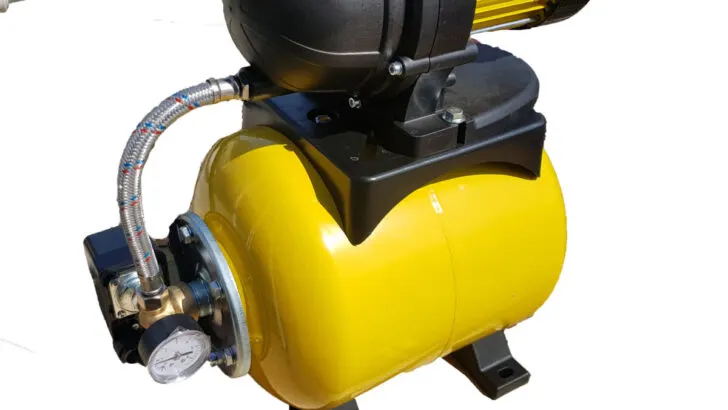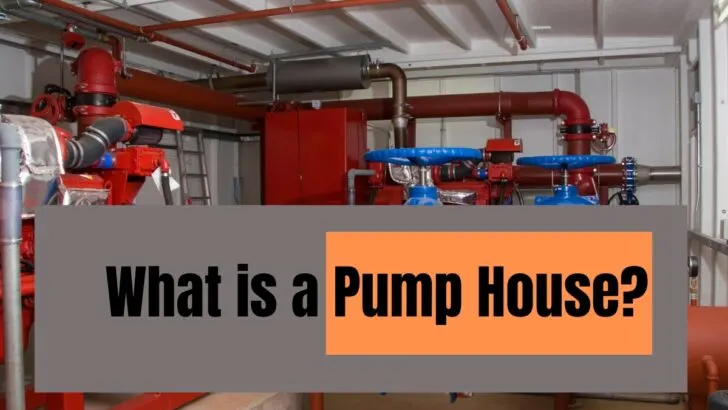You may have heard of pump houses for firefighting, agriculture, or other applications. But what is a pump house? What are they used for?
A pump house is a building that contains water pumps that move water for irrigation, land drainage, sewage treatment, or fire fighting. Pump houses have been around for a long time and are still commonly used.
Without pumps, we could not grow nearly as much food as we can today.
What Are Pump Houses?
A pump house is a building that houses powerful pumps for irrigation or many other purposes. Pump houses are also called pumping stations.
Pump houses are also used in fire fighting and for other purposes. There are pump houses for land drainage, drinking water, wastewater, canals, and more.
Pump Houses for Land Drainage
Normally, you can drain land with an irrigation ditch, so it would be a waste of money to use pumps. However, if the land is too low, especially if it is below sea level, an irrigation ditch won’t work. People use pumps to drain low-altitude land.
With pumps, you move the water uphill to rivers that eventually reach a larger river that takes the water to the sea.
Draining Land for Irrigation
Using pumps to drain land is not a new technological achievement. People in 19th century Britain were using pump houses with steam-powered pumps to drain the land.
This increased the amount of good farmland available in Britain. After some large wetland areas were drained, they became very good farmland. The land that the work uncovered was full of nutrients and great for agriculture.
In some places, such as New Orleans, a lot of land has been lost to storms and flooding. Pumps allow people to remove the water from low-lying land and reclaim it.

Why Do Pumps Need to Be Housed?
If the pumps are not housed, they might freeze during the colder weather. Many other ways leaving pumps exposed to the elements could damage them.
Expensive equipment should not be left out in the open. Anyone working with the pumps also needs shelter if there is bad weather.
Can You Build a Pump House Yourself?
You could build a pump house if you have a well or an outdoor pump. Building a pump house is easier and cheaper than having to repair a pump that gets damaged. You can also buy a pre-built steel shelter to use as a pump house.
How Does a Sewage Pumping Station Work?
First, sewage reaches a tank, where it accumulates. When the tank starts becoming full, a pump activates.
The pump lifts the sewage and pushes it through pipes until it reaches a sewer or sewage treatment plant.
The electronic sensors in pump houses can be complicated. In the simplest terms, a float switch turns the pumping station on when the level of sewage is high enough and then turns it off when it is much lower.
Pumping Station Maintenance
Irrigation pump houses can be anywhere from small to large, depending on the purpose. If the owners do not maintain the equipment, it will eventually stop working properly or break.
In the humid Florida climate, rust is a big threat. Rust can destroy external and internal piping, plus other essential parts of the system. Routine rust removal is necessary.
Other Parts That Need Maintenance
Motors can also break if they are not maintained. You need to grease the bearings, or they will fail. Variable frequency drives can also fail due to the connections heating up repeatedly.
There are other parts of a pumping station that need maintenance, including:
- Pump station protective devices
- Pressure tanks
- Centrifugal stations
Different components must work together to keep the pumping station working. If one component fails, everything might stop working.
Pump Houses as Museums
Some pump houses that are no longer used have been turned into museums for people interested in the old technology. The UK, Canada, the United States, Spain, and some other countries have turned some old pump houses into museums.
Pumps Transport Water Uphill
Pumps are necessary for situations where you can’t rely on gravity to do the job. Many people live on high ground or hills, so pumps are necessary to move water from lower ground to their homes. If people live lower to the ground, gravity can do some of the work.
For this to work, the pumps have to be strong enough to overcome gravity. Pump houses include programmable pumps that can be adjusted to apply more or less pressure.
To calculate the amount of pressure required, you have to consider the size of each pipe and fitting, all cases where the water flows uphill, bends in the pipes at different angles, and more. Liquids other than water may need more pressure to push them through the pipes.
What Powers Pumping Stations?
Pumping stations used to be steam-powered back when this was the best power source. Today, pump houses usually rely on the power grid. Some pump houses use natural gas, and they may normally use solar or wind power in the future.
Key Takeaways to Pump Houses
Pump houses are buildings that house pumps used for irrigation and many other purposes. The buildings are necessary to protect the pumps from cold weather or storms that could damage them and to provide shelter for workers.
Pump houses are used for wastewater, canals, agriculture, land drainage, drinking water, firefighting, and more.
Large engine-powered pumps are not new technology. In the 19th century, wetlands in Britain were drained and turned into highly arable farmland.


